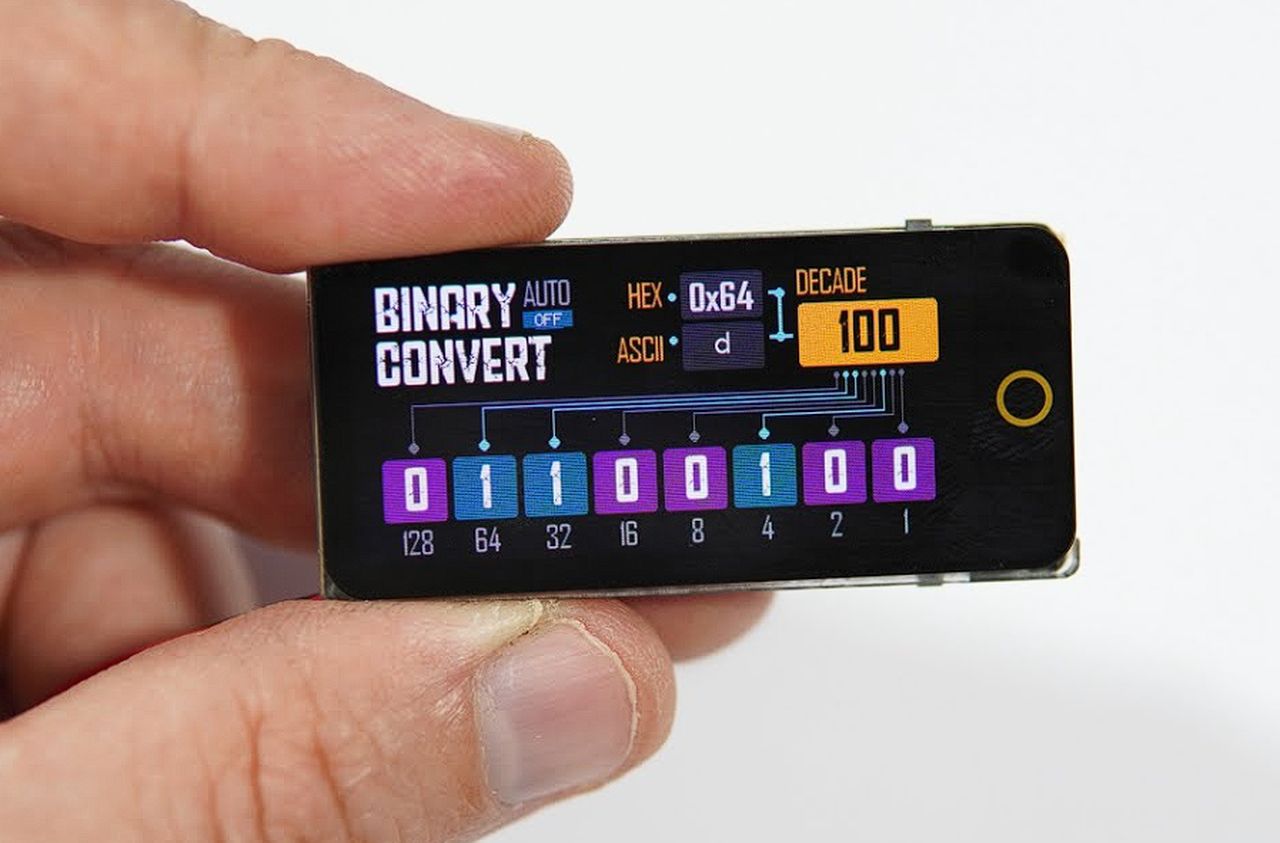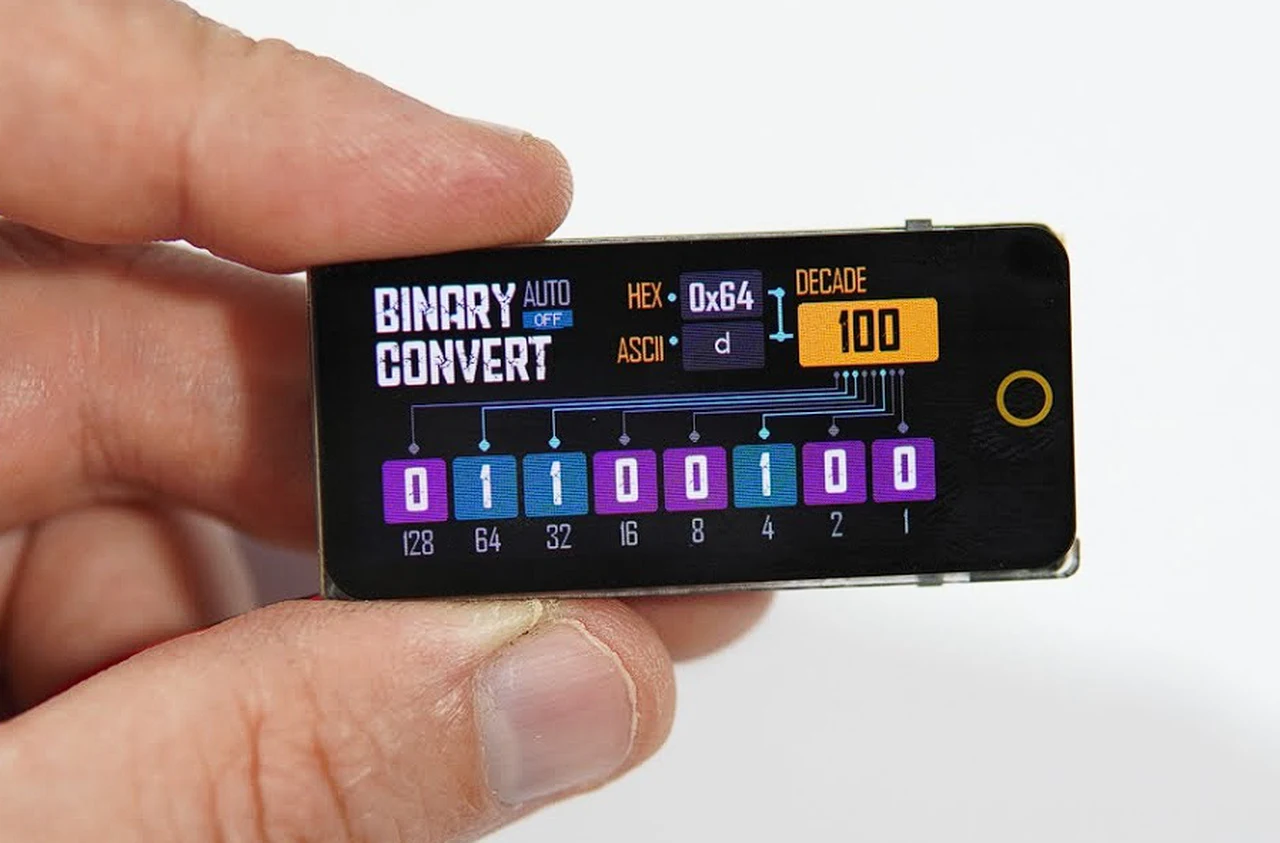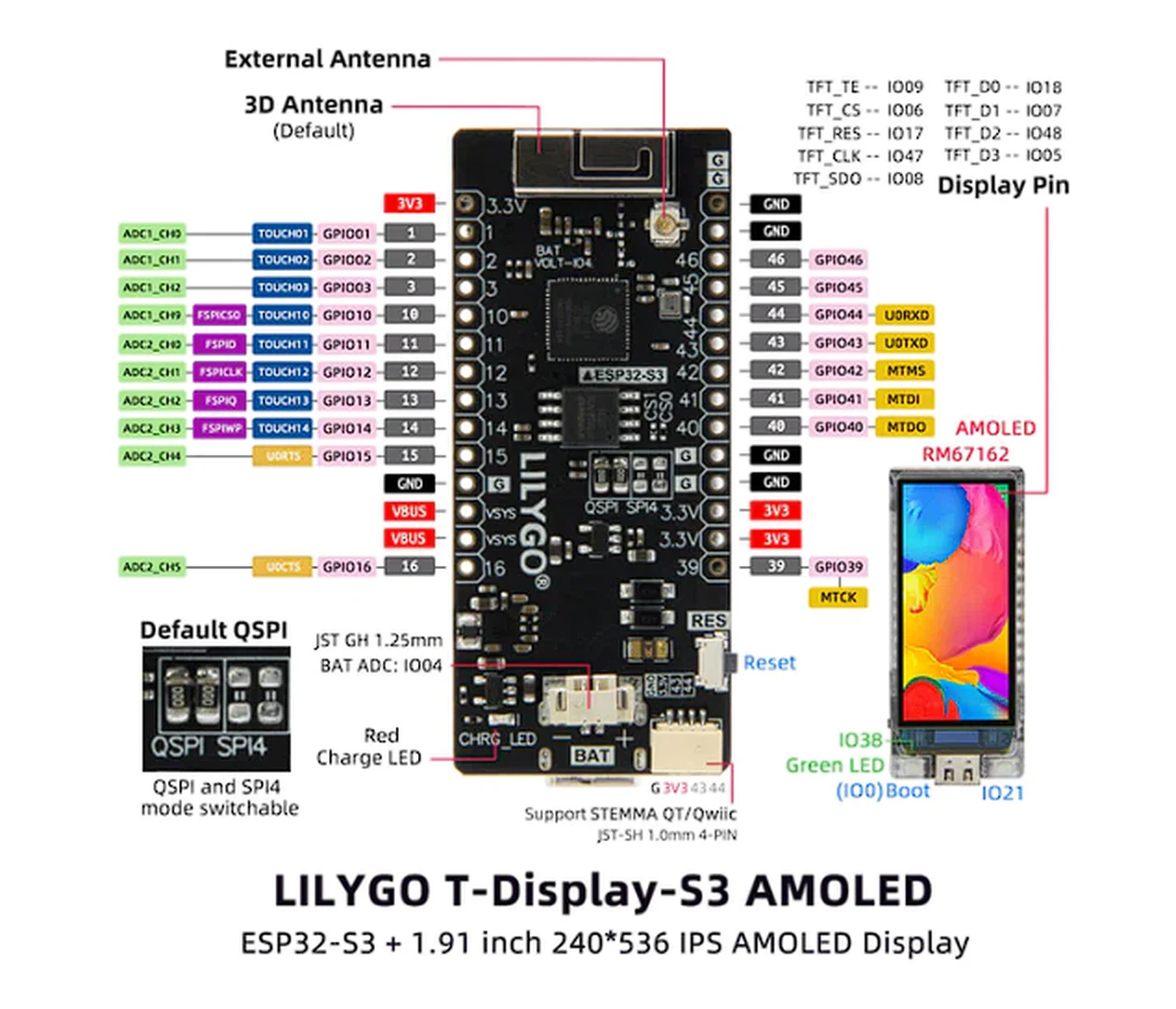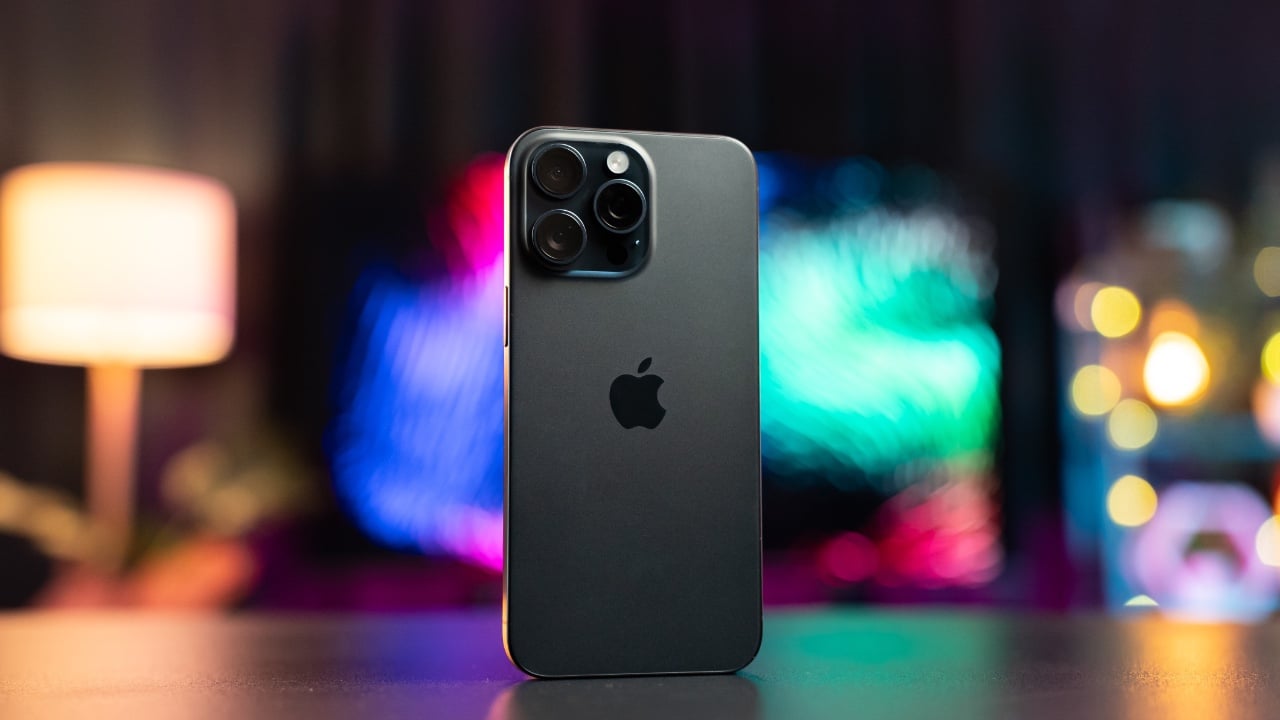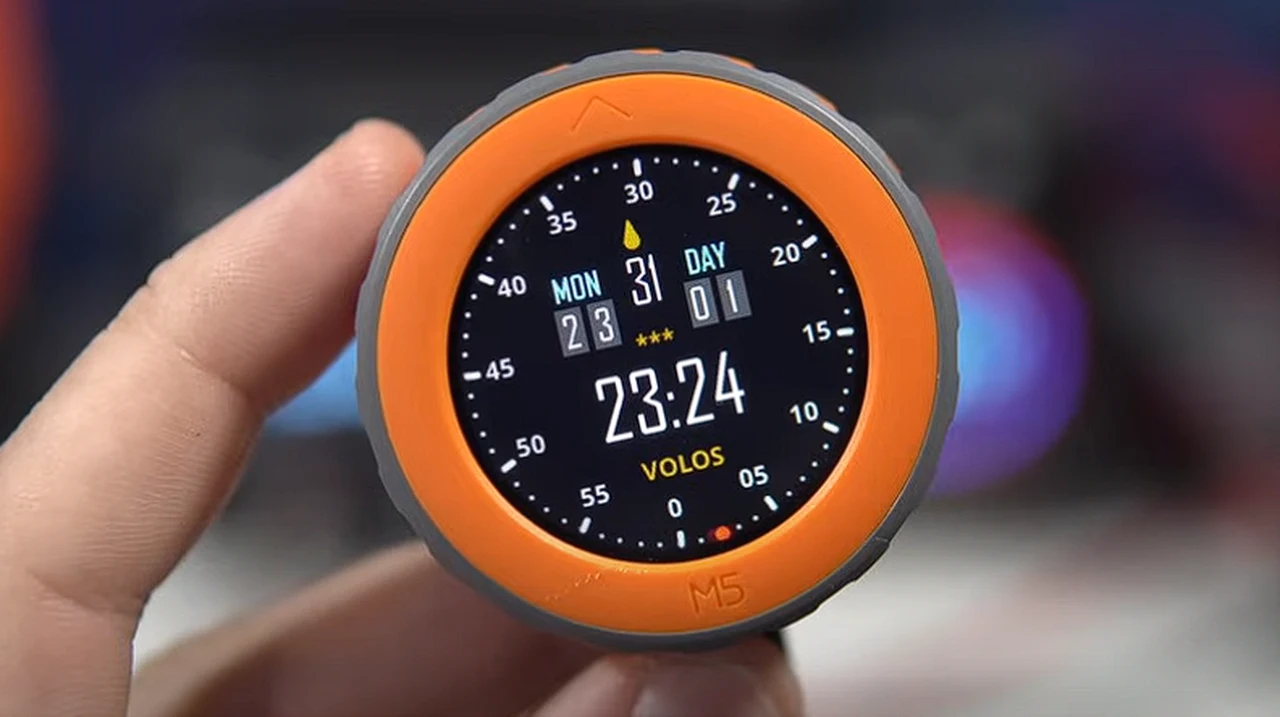
If you would like to add programmable controls via touchscreen and rotary dials to your existing project or next home automation system the M5Dial might be worth more investigation. Its interactive display, coupled with connectivity features, allows it to control various home devices such as lighting, air conditioning, and curtains. The rotary encoder is particularly useful for adjusting settings like brightness and volume with ease, making it a convenient tool for enhancing home comfort and efficiency.
The M5Stack Dial combines various ways of input and display. It has a rotary encoder and a button, making it easy and responsive to use. It also has a touchscreen, which adds a modern and easy-to-use feature to the device. Being able to connect to other devices is important for modern gadgets, and the M5Dial does this extremely easily.
USB & Wireless Connectivity
It has a USB port for power and data, and it can connect to Wi-Fi for wireless communication. The device also has groove connectors, which make it easy to connect to other devices or modules. The M5Dial is powered by the ESP 32 S3 microcontroller and the M5 Stamp microcontroller module. These are on a development board, giving the device the power it needs while making sure it is strong and reliable.
RFID
Equipped with an RFID card reader, it becomes an effective tool for secure identity verification and access management, ideal for use in office buildings, residential complexes, or any facility that requires controlled access. In addition, its real-time clock chip enables it to function as a reliable timer or clock, which can be used in both domestic and professional environments.
Timer
Track time with the integrated Real-time Clock Chip, useful for things like clocks or timers, showing how flexible the M5Dial can be.
RFID Card Reader: This advanced technology is great for security and access control, making the device more useful. The M5Dial also has a handy beeper for sound alerts, which is very useful for timers and alerts.
For power management, the M5Dial is made to use energy efficiently. It has a power management chip and offers different ways to power it, including a USB port, a battery connector, or a 6 to 24-volt connector. You can also charge it with a built-in charger or power it with a solar panel, which is good for the environment and makes it portable. TheM5Dia features an LCD for its display, which shows clear and bright images while saving energy. This helps the device last longer without using too much power.
In an industrial setting, the M5Dial’s robust build and versatility make it a strong candidate for integration into control systems. It can monitor and manage various industrial processes, demonstrating its capability in more demanding environments. Furthermore, for educational purposes, the M5Dial serves as an excellent tool. It’s ideal for teaching and learning about electronics, coding, and automation due to its wide range of features and sensors.
M5Dial programmable automation controller with touchscreen RFID and more
Even with all these features, the M5Dial is easy to set up. This, along with its many uses and strong build, makes the M5Dial very valuable in different places, like in home automation or in industrial control systems.
Other articles you may find of interest on the subject of ESP32 devices and electronic components :
Features of the M5Dial fantastic ESP32 device from M5Stack
- Display and Interaction: The M5Dial boasts a 1.28-inch round TFT touchscreen, offering a visually appealing and interactive user experience. This display, combined with under-screen buttons, provides a platform for creative and diverse projects.
- Rotary Encoder: A key feature of the M5Dial is its rotary encoder. This component accurately records the position and direction of the knob, elevating the user interaction experience. It allows for the adjustment of settings such as volume and brightness and can control home applications like lighting, air conditioning, and curtains.
- Main Controller – M5StampS3: The heart of the M5Dial is the M5StampS3, a micro module based on the powerful yet energy-efficient ESP32-S3 chip. This controller supports Wi-Fi and a range of peripheral interfaces including SPI, I2C, UART, ADC, and more. With 8MB of built-in Flash, it provides ample storage space for various applications.
- RFID Detection: The device also features RFID detection, capable of recognizing RFID cards and tags operating at 13.56MHz. This function can be utilized in access control systems, identity verification, and even payment solutions.
- Real-Time Clock (RTC) Circuit and Buzzer: The M5Dial includes an RTC circuit for accurate timekeeping, essential in many applications. Alongside this, an onboard buzzer and physical button facilitate sound prompts and wake-up operations, adding another layer of user interaction.
- Power Supply Options: The device offers versatile power supply options. It supports a wide voltage range (6-36V DC input) and includes a battery port with an integrated charging circuit, compatible with external Lithium batteries. This flexibility allows users to power the M5Dial via USB-C, a DC interface, or an external battery, making it ideal for portable applications.
- Port Interfaces: M5Dial comes equipped with two PORTA and PORTB interfaces, supporting the expansion of I2C and GPIO devices. These interfaces enable users to connect various sensors, actuators, displays, and other peripherals, significantly expanding the device’s functionality and application possibilities.
Image Credit : Volos Projects
Filed Under: Hardware, Top News
Latest timeswonderful Deals
Disclosure: Some of our articles include affiliate links. If you buy something through one of these links, timeswonderful may earn an affiliate commission. Learn about our Disclosure Policy.


